How to Propagate Houseplants- 3 Rooting Mediums
Propagating houseplants is way easier than you might think. Just take a cutting from a healthy plant in hopes that it will grow roots of its own! It’s a simple way to add more plants to your collection or gift your. Not to mention, you can get creative with propagation – such as displaying cuttings in glass bottles or a decorative propagation tray. There is something so interesting about watching a plant grow roots. Keep reading to learn more about three different rooting mediums you can propagate your houseplants in, such as water, sphagnum moss and pumice!
When should I propagate my houseplants?
- During the warm months– The best time to propagate your houseplants is in the warmer months of Spring and Summer. However, if you live in a warm climate it can be done at any time of the year.
- When your plant is getting leggy– Have a pothos plant with ultra-long, leggy vines? This is a perfect time to propagate it. Cutting these back will actually promote more growth from the base of your plant, making for a more full plant!
- When your plant health is declining– Have you noticed a pest or two on your beloved houseplant? Quick! Take a cutting from a healthy part of the plant to ensure that some of the plant will be preserved in the event that the mother plant does not make it.
How to Take Stem Cuttings
Stem cuttings are one of the easiest ways to propagate houseplants. Pothos, monstera and other vining plants are some of the easiest to propagate by way of stem cuttings. Just make sure to include a node in the cutting which will increase the chances of it rooting tremendously.
How to take cutting from a philodendron plant-
- Identify a healthy vine to take a cutting from
- Cut about ¼” below the node
- Dip the cutting in rotting hormone (optional)
- Place the cutting in water or soil
- Place in indirect sunlight & keep the medium moist

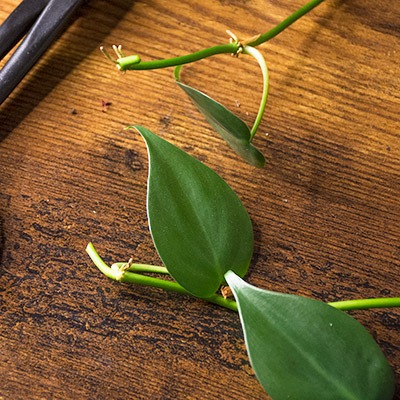
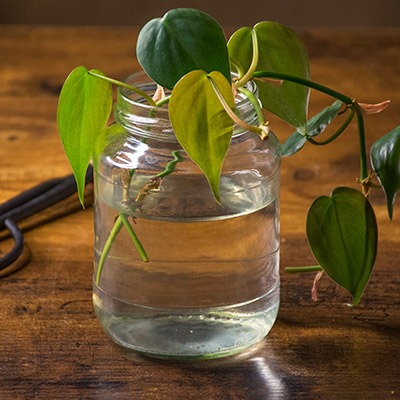
Rooting in Water
Water propagation is a favorite of ours because it allows you to monitor the root growth. There are so many ways to display water propagations, such as in array of oddly shaped glass bottles. You can even repurpose jars, wine bottles or even plastic water bottles. All of the bottles in the below above image were actually reused vinegar and kombucha bottles! Just dunk the bottle in hot water and scrub until the label is removed.
Many plants can be propagated in water, however some will take longer to root than others. Pothos, monstera and philodendron are among the easiest to water propagate. However, you can water propagate prayer plants, chain of hearts, and even snake plants and succulent varieties. They might just take a little longer to root.

Transferring a Water Propagation to Soil
- Be sure to keep the soil moist for the first couple weeks, as it will still be acclimating to the transition
- For added humidity, try placing a plastic bag over the cutting to model the conditions of a greenhouse
- Don’t get too ambitious with the size of the pot. For just a single, small cutting- you will most likely need no bigger than 4″ pot or smaller.
Pro Tip– Make sure to change the water in your vessels every week or so. This will prevent the build up of bacteria and/ or algae.
Recommended Plants- Philodendron, Pothos & Monstera
Rooting in Sphagnum Moss
Sphagnum Moss comes in a close second for the most common propagating medium. It works great for plants that take a bit longer to root, as it provides just the right amount of moisture. Start by misting some Preserved Sphagnum Moss and then place it in a plastic or glass container. We recommend using a clear container, so you can see the roots clearly without having to disturb the cutting. To take away the guesswork, we also recommend labeling the container with the date.
While waiting for the plant to root, the moss must be kept moist. To do this, you can mist the moss frequently- you want it to be damp not soaking. What is great about this medium is that when it is time to plant your cuttings in soil, the roots will not experience the shock that water propagation tend to go though when transferring to soil. When transferring the rooted cutting to soil, you will notice that the sphagnum is hard to separate from the roots. Save some time and just leave the remaining sphagnum bits attached to the roots. This will actually provide added moisture and ensure a smooth transition into soil.
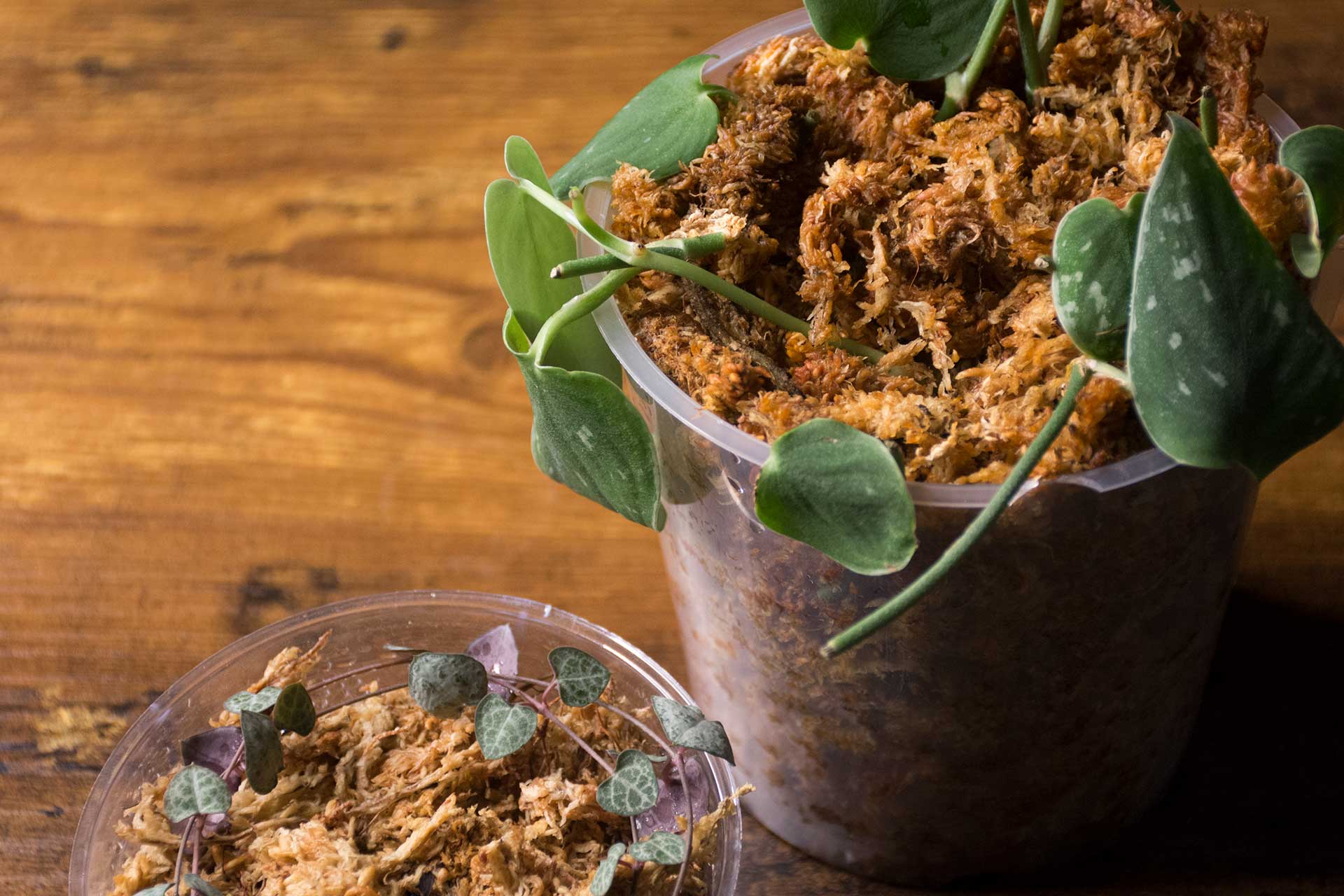
Pro Tip: For added humidity, you can plant the cuttings in a sealed plastic container or you can cover the glass vessel with a plastic bag. This method has proven to have the most success for us.
Recommended plants: Chain of Hearts, Silvery Anne Pothos
How to root a Chain of Hearts in sphagnum
The most efficient way to root a chain of hearts is be placing or coiling a couple cutting on a bed of sphagnum. Submerge the nodes facing down in the moss with the heart facing up. In a couple weeks you will notice tiny roots begin to form. To speed up the process place a plastic bag or glass dome over the cuttings to increase the humidity.
Rooting cuttings in Pumice
Rooting cuttings in pumice and water is something we have been experimenting with recently. It works particularly well for plants that rot quickly after trying to propagate, such as cacti. See this article on cacti propagation using pumice.
Basically, pumice propagation has all the benefits of water propagation, but the added pumice prepares the cutting for the transfer to soil. Pumice’s water holding capacity is what allows is to be a great propagating medium. It retains nutrient-rich water and gives it back to the roots overtime. This way the cutting is not sitting in soggy, wet soil. Not to mention, pumice is quite photogenic!
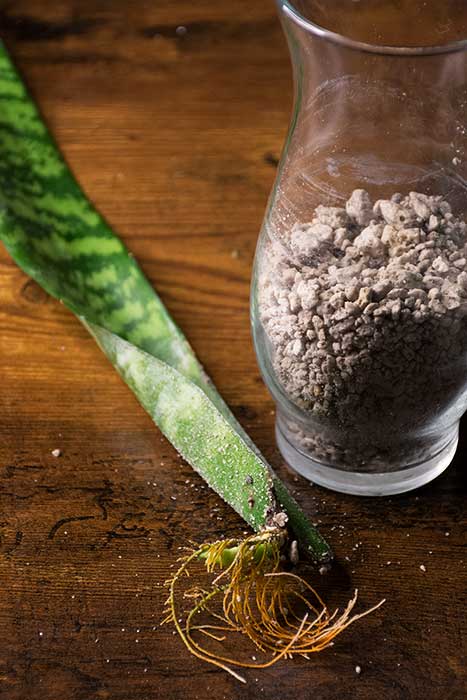
Pro tip– Do make sure you add water and/or terrarium enclosure if you choose pumice propagation. Propagation in pumice alone will most likely not provide enough moisture for root growth.
Recommended plants: euphorbia, cacti, succulents & snake plants
How to root a succulent or cactus in pumice
Take a stem cutting or leaf cutting of a succulent and dip it in rooting hormone (optional). Fill a container with about 1 inch of pumice and then add enough water so that the pumice begins to float. Place the cutting in the pumice. Be sure to add water in order to keep it from completely drying out.
Final Thoughts
- Propagation is all about trial and error.
- If possible, take as many cuttings as possible. Why? To ensure that at least one will be successful. It will also allow you have a full plant when you are ready to transfer the cuttings to soil
- When transferring a water propagation to soil make sure to keep the potting medium moist. This will keep it from going into shock after being transferred.
- Last but definitely not least- please refrain from taking cuttings from nurseries or garden stores. These growers and shopkeepers have put a considerable amount of effort into maintaining these plants and a removed branch can hurt their future sales.
Happy Propagating!
Cheers,
SuperMoss!



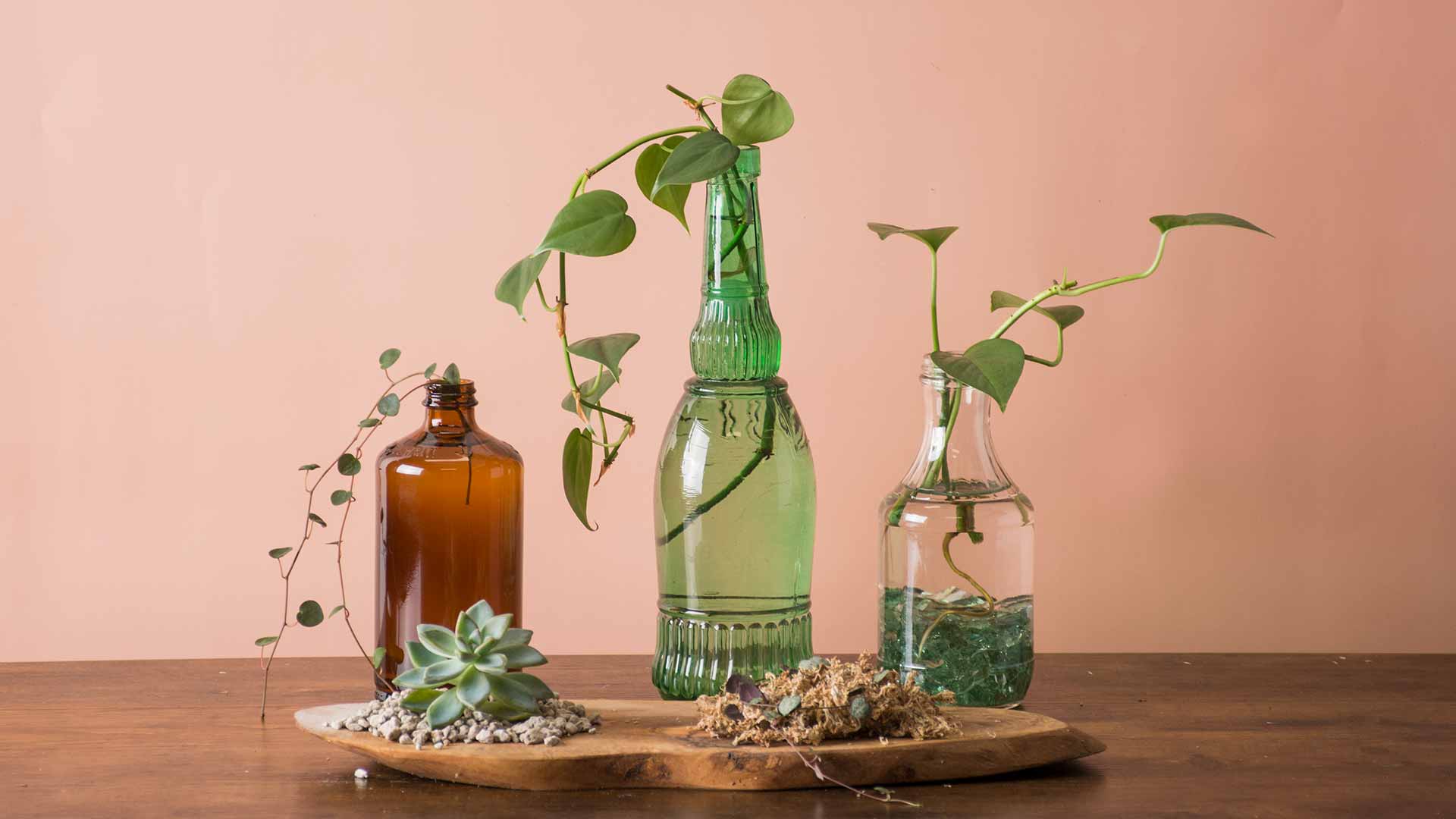


Leave a Reply